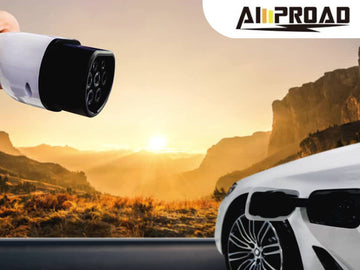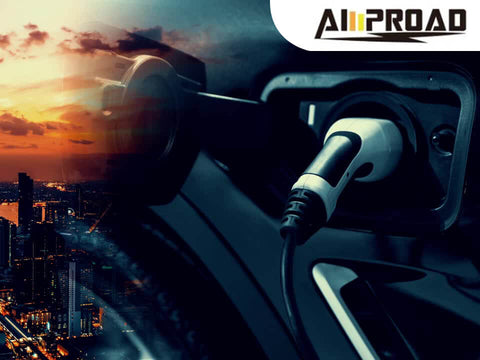
Fast charging convenient, but is it harming your EV battery? Slower charging offers benefits like longer battery life & reduced energy use, but takes more time. Find the right charging balance for your electric car!
Electric vehicles (EVs) are rapidly gaining popularity due to their environmental benefits and lower operating costs. However, keeping them charged is crucial. Unlike gasoline-powered cars with a quick refuel at the pump, EVs rely on charging stations, which come in various forms with different speeds. Faster charging options are certainly convenient, but what about slower charging? Could there be any advantages to plugging your EV in for a longer period? Let's explore the reasons why slower charging might be a good choice for some situations.
What Are the Benefits of Slower EV Charging
Electric vehicles (EVs) have emerged as a sustainable transportation option, offering benefits such as reduced emissions and lower fuel costs. As the EV market continues to grow, exploring different charging options becomes essential. Slower EV charging, despite its longer duration, presents several advantages worth considering.
Battery Longevity
One significant benefit of slower EV charging is its positive impact on battery longevity. When EVs charge at slower rates, they generate less heat, which is a primary cause of battery degradation over time. By minimizing heat generation, slower charging helps extend the lifespan of EV batteries, ultimately reducing the need for premature replacements and saving costs for EV owners.
Grid Strain Reduction
Slower EV charging also contributes to reducing strain on the power grid. During peak usage times, fast charging stations can put significant stress on the grid, potentially leading to power fluctuations or overloads. However, slower charging distributes the load more evenly, easing the burden on the grid infrastructure. This helps maintain grid stability and reliability, benefiting both EV owners and the broader community.
Cost Efficiency
Another advantage of slower EV charging is its potential for cost efficiency, particularly in regions with time-of-use electricity rates. These rates offer lower prices for electricity during off-peak hours, making it cheaper to charge EVs overnight or during periods of reduced demand. By taking advantage of off-peak rates, EV owners can lower their charging costs significantly, resulting in long-term savings on their energy bills.
Solar Power Synergy
For homeowners with solar power installations, slower EV charging can enhance the synergy between EVs and renewable energy sources. By charging EVs at a slower rate, homeowners can maximize the utilization of their solar-generated electricity. This allows them to harness clean energy to power their vehicles, further reducing their carbon footprint and dependence on traditional grid power.
What Are the Drawbacks of Slower Charging
The main drawback of slower charging is time. A Level 2 EV charger can take anywhere from 4-11 hours to fully charge a battery, depending on the vehicle's battery size and the charger's output. This can be inconvenient if you need a quick top-up before a trip or forget to plug in overnight.
Additionally, the longer charging times may not align with the fast-paced lifestyle of some EV owners who require frequent and immediate access to a fully charged vehicle. Waiting several hours for a recharge can disrupt daily routines and limit the flexibility of using an electric vehicle, especially for those with busy schedules or limited access to charging infrastructure during the day.
Moreover, the reliance on slower charging may pose challenges for long-distance travel, where drivers often rely on fast-charging stations to minimize downtime during journeys. While slower charging may be suitable for overnight or regular home charging, it may not meet the needs of drivers seeking quick refueling options during extended trips.
Furthermore, in situations where public charging stations including Tesla destination charger are the only available option, slower charging can lead to longer wait times, especially during peak usage periods. This can result in inconvenience and frustration for EV owners who are accustomed to the convenience of fast-charging options when away from home.
Despite these drawbacks, advancements in EV technology and charging infrastructure are continually addressing the issue of longer charging times. Faster-charging solutions, such as Level 3 DC fast chargers, are becoming more prevalent, offering significantly reduced charging times compared to Level 2 charger. As the EV industry evolves, finding a balance between charging speed, convenience, and accessibility will be crucial in driving widespread adoption and acceptance of electric vehicles.
How to Decide the Right Approach
Consider Your Driving Needs
When choosing between slower charging options like Level 1 and Level 2 chargers, it's crucial to assess your driving needs and lifestyle. Level 1 chargers, typically used with a standard household outlet, offer the convenience of charging your EV wherever there's access to electricity. Although they provide the slowest charging speeds, they can suffice for daily commuting and overnight charging, particularly for those with shorter driving distances or ample time to charge. In contrast, EVSE Level 2 chargers provide faster charging rates and are often installed at home or in public charging stations. Requiring a dedicated 240-volt outlet, these chargers significantly reduce charging times compared to Level 1 chargers, making them ideal for EV owners with longer commutes or those in need of quicker recharging capabilities.
AMPROAD Dual-Use Chargers: Versatility in Charging
For those seeking a versatile charging solution, AMPROAD offers dual-use EV chargers that support both Level 1 and Level 2 charging. These innovative chargers provide the flexibility to adapt to different charging needs, allowing EV owners to switch between slower overnight charging and faster charging for quick top-ups during the day. With an AMPROAD dual-use charger, EV owners can enjoy the convenience of slower charging at home while also having the option to utilize faster charging capabilities when needed, whether at home or on the go.
Embracing Smart Charging Technologies
As technology advances, smart charging solutions are becoming increasingly prevalent in the EV market. These intelligent systems optimize charging based on user preferences, grid conditions, and energy prices, enabling EV owners to manage their charging more efficiently while minimizing costs and reducing strain on the grid. By incorporating smart charging capabilities into their charging infrastructure, EV owners can enhance the convenience and sustainability of electric transportation while maximizing the benefits of their EV ownership experience. Ultimately, the right charging approach will depend on individual driving habits, accessibility to charging infrastructure, and the desired balance between charging speed and convenience.
The Benefits and Importance of Slower EV Charging

Slower EV charging presents several advantages that contribute to a more sustainable and cost-effective electric vehicle ownership experience. By charging at a slower rate, EV owners can promote battery longevity by reducing heat generation and minimizing degradation over time. Additionally, slower charging helps alleviate strain on the power grid, particularly during peak usage times, contributing to grid stability and reliability. Furthermore, slower charging can lead to cost savings, especially in regions with time-of-use electricity rates, where off-peak charging can result in lower electricity costs for EV owners.
It's important to note that while slower charging may not always be the fastest option, it plays a valuable role in responsible EV ownership. While faster charging options may offer convenience and quicker turnaround times, slower charging provides an opportunity to prioritize battery health, minimize environmental impact, and make more efficient use of energy resources. Ultimately, finding the right balance between charging speed, convenience, and sustainability is key to maximizing the benefits of electric transportation and promoting the widespread adoption of EVs in the transition to a cleaner, greener future.
FAQs / People Also Ask
Q: Why should I consider slower charging options for my electric vehicle (EV)?
A: Slower charging options offer several benefits that contribute to a more sustainable and cost-effective EV ownership experience. By charging at a slower rate, you can promote battery longevity, reduce strain on the power grid, and potentially save on electricity costs.
Q: How does slower charging contribute to battery health?
A: Slower charging reduces heat generation, which is a primary cause of battery degradation over time. By minimizing heat, slower charging helps extend the lifespan of EV batteries, ultimately reducing the need for premature replacements and saving costs for EV owners.
Q: Can slower charging help alleviate strain on the power grid?
A: Yes, slower charging puts less stress on the power grid, particularly during peak usage times. Unlike fast charging, which can spike demand and strain grid infrastructure, slower charging distributes the load more evenly, helping maintain grid stability and reliability.
Q: Are there any cost-saving benefits to slower charging?
A: Yes, slower charging can lead to cost savings, especially in regions with time-of-use electricity rates. Charging during off-peak hours when electricity rates are lower can result in significant savings on your energy bills over time.
Q: Is slower charging always the best option for EV owners?
A: While slower charging offers benefits for battery health, grid stability, and cost savings, it may not always be the fastest option. Depending on your driving needs and lifestyle, faster charging options may be more suitable for certain situations, such as long-distance travel or quick top-ups before a trip. Finding the right balance between charging speed, convenience, and sustainability is key to maximizing the benefits of electric transportation.



